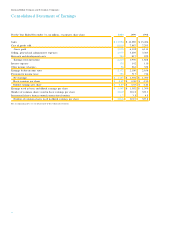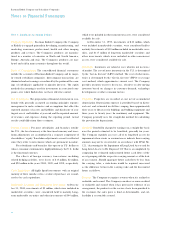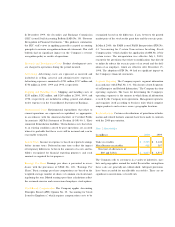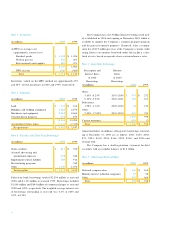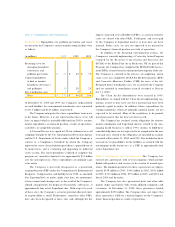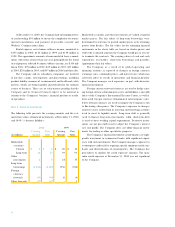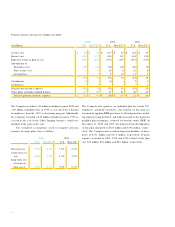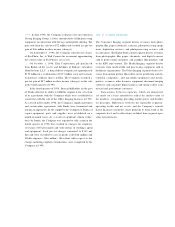Kodak 2000 Annual Report Download - page 53
Download and view the complete annual report
Please find page 53 of the 2000 Kodak annual report below. You can navigate through the pages in the report by either clicking on the pages listed below, or by using the keyword search tool below to find specific information within the annual report.In the second quarter of 2000, the Company re v e r s e d
a p p roximately $44 million of severance related costs originally
re c o rded as part of this program. The reversal was the result of
two factors which occurred during the second quart e r. First, cer-
tain manufacturing operations originally planned to be outsourc e d
will now be retained, as cost beneficial arrangements for the
Company could not be reached. Second, severance actions in
Japan and Europe were completed at a cost less than originally
estimated. Consequently, approximately 500 (450 manufacturing
and 50 administrative) fewer employees were separated. Of the
$44 million reversal, approximately $25 million was re c o rded in
cost of goods sold and approximately $19 million was re c o rd e d
as part of SG&A, consistent with where the original charges
w e re re c o rded. Aside from the actions described above, all other
p rojects included in this program were effectively completed
by December 31, 2000. A total of 2,900 employees were term i-
nated under this pro g r a m .
In addition to the charges discussed above, the Company
i n c u rred pre-tax charges of approximately $50 million during 2000
for the accelerated depreciation of certain assets which re m a i n e d
in use until the Company sold its Elmgrove manufacturing facility
in the second quart e r, and related relocation costs. The sale of
this facility did not result in a material gain or loss to the Company.
Also during 2000, the Company completed all planned
actions related to a re s t ructuring program which began in 1997.
The actual cost to complete the 1997 program was in line with
the C ompany’s expectations.
Note 12: Retirement Plans
Substantially all U.S. employees are covered by a noncontributory
plan, the Kodak Retirement Income Plan (KRIP), which is funded
by Company contributions to an irrevocable trust fund. The fund-
ing policy for KRIP is to contribute amounts sufficient to meet
minimum funding re q u i rements as determined by employee ben-
efit and tax laws plus additional amounts the Company determines
to be appropriate. Generally, benefits are based on a formula
recognizing length of service and final average earnings. Assets
in the fund are held for the sole benefit of participating employ-
ees and re t i rees. The assets of the trust fund are comprised of
corporate equity and debt securities, U.S. government securities,
p a rtnership and joint venture investments, interests in pooled
funds, and various types of interest rate, foreign currency and
equity market financial instruments. Kodak common stock re p re-
sents approximately 4.0% of trust assets.
On March 25, 1999, the Company amended this plan to
include a separate cash balance formula for all U.S. employees
h i red after Febru a ry 1999. All U.S. employees hired prior to that
date were granted the option to choose the KRIP plan or the
Cash Balance Plus plan. Written elections were made by employ-
ees in 1999, and were effective January 1, 2000. The Cash
Balance Plus plan credits employees’ accounts with an amount
equal to 4% of their pay, plus interest based on the 30-year tre a s-
u ry bond rate. In addition, for employees participating in this plan
and the Company’s defined contribution plan, the Savings and
Investment Plan (SIP), the Company will match SIP contributions
for an amount up to 3% of pay, for employee contributions of up
to 5% of pay. As a result of employee elections to the Cas h
Balance Plus plan, the reductions in future pension expense will
be almost entirely offset by the cost of matching employee con-
tributions to SIP. The impact of the Cash Balance Plus plan is
shown as a plan amendment.
Most subsidiaries and branches operating outside the U.S.
have re t i rement plans covering substantially all employees. Con-
tributions by the Company for these plans are typically deposited
under government or other fiduciary-type arrangements. Retire-
ment benefits are generally based on contractual agreements that
p rovide for benefit formulas using years of service and/or com-
pensation prior to re t i rement. The actuarial assumptions used for
these plans reflect the diverse economic environments within the
various countries in which the Company operates.
52


